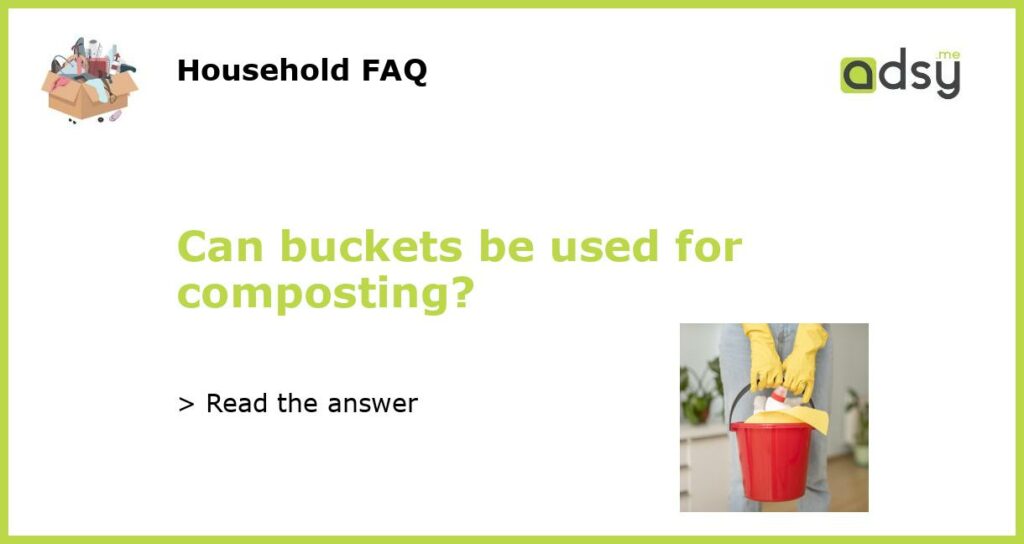Yes, buckets can be used for composting
Buckets can be a great alternative for composting, especially for those who have limited space. Composting is a natural process that breaks down organic matter, such as food waste and yard trimmings, into a rich soil amendment. This process can be done in many different ways, including using compost bins, piles, or even buckets.
Choosing the right bucket
When selecting a bucket for composting, it’s important to choose one that is large enough to hold a sufficient amount of compostable material. A five-gallon bucket is a common choice, as it provides enough space for composting while still being manageable in size. Make sure the bucket has a lid to keep odors and pests contained, and consider drilling holes in the sides and bottom for proper aeration and drainage.
It’s also important to use a bucket that is made from a material that will not break down over time, such as plastic or metal. Avoid using buckets that are made from materials like wood, as they may deteriorate and affect the composting process.
The composting process
Start by adding a layer of brown, carbon-rich material to the bottom of the bucket. This can include items such as dried leaves, shredded paper, or straw. Next, add a layer of green, nitrogen-rich material, such as kitchen scraps or grass clippings. Alternate these layers until the bucket is full, making sure to mix and moisten the contents periodically. The ideal ratio for composting is about 25 parts carbon to 1 part nitrogen.
It’s important to note that composting in a bucket may take longer than traditional composting methods due to the limited space and lack of diversity in materials. However, with patience and proper maintenance, you can still achieve a high-quality compost that can be used in your garden or potted plants.
Maintaining the compost
Regular maintenance is essential for successful composting in a bucket. Turn the contents of the bucket every few weeks to ensure proper aeration and decomposition. Adding water as needed to keep the compost moist, but not overly wet, is also crucial. If the compost becomes too dry, it will slow down the decomposition process. If it becomes too wet, it may start to smell or attract pests.
Remember to monitor the temperature of the compost as well. A healthy compost pile should reach temperatures between 110-160 degrees Fahrenheit, indicating that the microorganisms responsible for decomposition are active. If the temperature drops significantly, it may be a sign that the compost needs more aeration or a different balance of materials.
Using the compost
Once the compost has fully decomposed, it will have a dark, crumbly texture and a pleasant earthy smell. This compost can be used to enrich soil in the garden, amend potting mixes, or topdress lawns. The compost adds vital nutrients to the soil, improves its structure, and enhances water retention.
Before using the compost, it’s important to let it “cure” for a few weeks to allow any remaining decomposition to complete. This will ensure that the compost is stable and won’t harm your plants.
In conclusion, buckets can be used for composting and are a great option for those with limited space. By choosing the right bucket, following the proper composting process, and maintaining the compost, you can create nutrient-rich compost that benefits your garden and reduces waste. So, if you’re looking for a simple and effective way to compost, give buckets a try!






